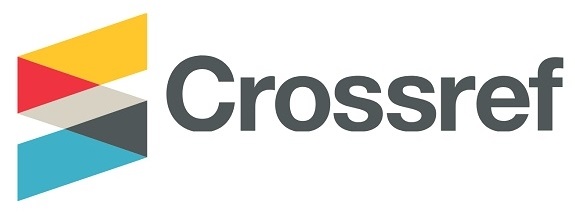GREEN BUFFER ZONE CASE STUDY AT THE FINAL WASTE PROCESSING SITE IN MANGGAR, BALIKPAPAN CITY
DOI:
https://doi.org/10.36277/identifikasi.v8i2.248Keywords:
Green Buffer Zone, Waste Final Processing SiteAbstract
Final Processing Site (TPA) is a place that processes and returns waste to environmental media. Throughout 2021, the average daily waste volume will reach 390.65 tonnes. There are seven landfill zones in Manggar, zones 1 to 4 have been planted with vegetation and are being used as buffer zones, zone 5 has just been closed, zone 6 is currently receiving waste, and zone 7 is a waiting zone. Reforestation of TPA land is needed for several purposes including improving environmental aesthetics, as a buffer zone to prevent excessive odors and flies. The research objective was to determine the condition of the case study green buffer zone at the final waste processing site in Manggar City of Balikpapan. This research was conducted by observing the green buffer zone in the form of green belt thickness and plant species, interviewing employees and the local community about odor and noise disturbances from Final Processing Site (TPA) activities. Based on the results of observations of the buffer zone, from 34 observation points there are 23 observation points with a green belt thickness of less than 100 meters, but if it refers to the regulations regarding Green Open Space (RTH), the TPA area is 49.89 ha with an open area of 7.7 ha. then TPA still has green open space of 42.19 ha (according to the minimum green open space regulations of 30% of the landfill area which is 14.967 ha). Based on the results of interviews and observations of secondary air quality data (chemical parameters that give rise to an unpleasant odor) and noise analyzed in the TPA area and in the local residential area, it shows that there have been no complaints from the local community about the smell and noise from TPA activities, the results of secondary data analysis air quality and noise also show values that are still below the quality standards.
References
Dwicahyo, H. B. (2017). Analisis kadar NH3, karakteristik individu dan keluhan pernapasan pemulung di TPA sampah benowo dan bukan pemulung di sekitar TPA sampah benowo surabaya. Jurnal Kesehatan Lingkungan, 9(2), 135–144. https://doi.org/10.20473/jkl.v9i2.2017.135-144
Keputusan Menteri Lingkungan Hidup No. 48 Tahun 1996 Tentang Baku Mutu Kebisingan, 7 (1996).
Keputusan Menteri Negara Lingkungan Hidup No . 15 Tahun 1996 Tentang : Baku Tingkat Kebauan, 1 (1996).
Peraturan Menteri Pekerjaan Umum No. 19/PRT/M/2012 tentang pedoman penataan ruang kawasan sekitar tempat pemrosesan akhir sampah, 1 (2012).
Munif, F., Afifuddin, & Anadza, H. (2022). Efeektivitas sistem sanitary landfill oleh pemerintah kabupaten Sumba Barat. Jurnal Respon Publik, 16(5), 14–18.
Pemerintah, K. B. (2020). Outline Business Case untuk Pengelolaan Sampah Manggar KPBU dalam Sektor Pengelolaan Sampah.
Purwaningrum, P., Pratama, I., & Handoko, W. (2011). Desain Pengembangan Landfill Zona 3 Studi Kasus Landfill Manggar Balikpapan. Indonesian Journal of Urban and Environmental Technology, 5(5), 159–166. https://doi.org/10.25105/urbanenvirotech.v5i5.687
Undang-undang No.18 Tahun 2008 tentang Pengelolaan Sampah, 61 (2008).
Ratih Andhika A.R, & Tofan Agung E.P. (2016). Pengaruh paparan CH4 dan H2S terhadap keluhan gangguan pernapasan pemulung di tpa mrican kabupaten ponorogo. Journal of Industrial Hygiene and Occupational Health, 1(1), 1–14. https://doi.org/10.21111/jihoh.v1i1.603
Rumbruren, A. A., Raymon, T. C., & Sembel, A. (2015). Evaluasi Kelayakan Lokasi Tempat Pembuangan Akhir Sampah Di Kecamatan Manokwari Selatan. Spasial Perencanaan Wilayahdan Kota, 2(3), 1–10. https://doi.org/10.35793/sp.v2i3.9973
Yosieguspa, Y. (2015). Pengaruh vegetasi dalam meredam tingkat kebisingan Lalu lintas jalan raya di kawasan taman wisata Alam (twa) punti kayu palembang. Jurnal Dampak, 12(2), 104–113. https://doi.org/10.25077/dampak.12.2.104-113.2015
Downloads
Published
How to Cite
Issue
Section
License
Copyright (c) 2022 IDENTIFIKASI

This work is licensed under a Creative Commons Attribution-ShareAlike 4.0 International License.









